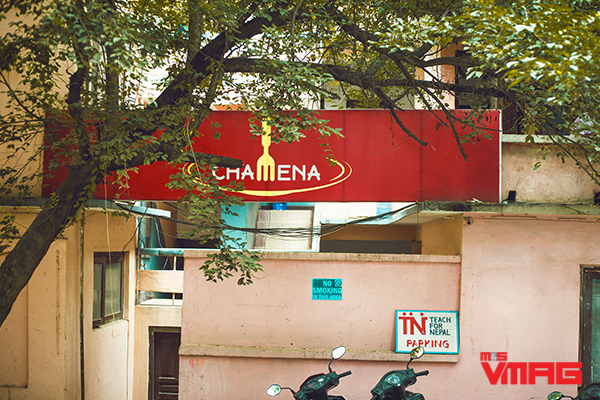E-commerce: Miles to go
E-commerce, a growing trend worldwide, is expected to continue growing in the foreseeable future. A market research company, eMarketer (operating out of New York), projects that the worldwide total sales through e-commerce will surpass four trillion dollars by 2020 making up to 14.6 per cent of the total retail spending. E-commerce will be more successful in less-developed countries compared to developed ones, owing to their need and lack of commercial infrastructure in place, says Jack Ma, the founder of Alibaba Group. Similarly, the World Trade Organization's 2013 report 'E-commerce in Developing Countries' highlights the tremendous possibilities online businesses have for small and medium-sized businesses in developing countries, if they can capitalise on information technology.
Nepal is a developing country without an adequate retail infrastructure in place. Concurrently, growing income, fuelled by remittance money and international exposure through media and television, has increased demand for consumables. In such situations, e-commerce could prove to be an alternative to traditional retail stores. But is Nepal, as a country, ready to capitalise on the potential of e-commerce? Specific data regarding how e-commerce in Nepal has changed over the years is not available. However, most market watchers agree that there is enough potential because of the large number of youth we now have who embrace change, the increase in the number of internet and mobile users, increasing number of e-commerce startups, and the slowly digitising financial landscape.

Early adopters among the millennials
According to the 2011 national census, people aged between 16-40 years account for 40.33 per cent of the total population of Nepal. Many of these youths were born during the 80s and 90s and fall under the millennial category. Dan Schawbel, in his analysis of millennial behaviour published in Forbes magazine in 2015, wrote, Millennials have a lot of influence over the older generation and are trendsetters across all industries from food to fashion. The youth of Nepal too possess such influential power. Research conducted by Kaymu in 2015 showed that the younger population aged between 18-35 tend to be more active in online shopping; they comprise around 90 per cent of Kaymu's total online clientele. This generation also tends to be more vocal about their opinions and are more likely to spread information to people from other generations if they are happy with a product or some service they have recently availed of.

The rise of connectivity
E-commerce of any form is directly affected by consumers' access to the internet as the first step to buying online is to be online. The number of internet users in Nepal is growing rapidly annually. The 'Management Information System' report by Nepal Telecom Authority released in November 2015 revealed an internet penetration rate of 44.11 per cent compared to 34.09 per cent a year before. Such rapid growth is set to continue as demand for the internet is growing across the country. Furthermore, the cost of internet access is going down, with more than 43 registered ISPs vying for parts of market share in the competitive market. New technologies like fibre-to-home are further helping reduce the cost of internet access. All of these factors converging to help bring Nepali businesses to their customers closer by a click.

Proof of industry existence
Many Nepali entrepreneurs are not oblivious of these changing trends and the possibilities these changes hold for the future. Thamel.com, Muncha, Hamrobazaar.com, Sastodeal, Threadpaints and Urbangirl, all e-businesses started by Nepali entrepreneurs, have carved out a niche for themselves in the online e-commerce landscape. Kaymu, a global brand that entered Nepal in late 2014, has quickly become a market leader in the Nepali e-commerce sphere. Furthermore, there are more startups entering the e-commerce landscape and they are targeting specialised niches like cheers.com.np, kitabtrade.com, bhojdeals.com and meroghar.com. And retailers like Bhatbhateni and Big Mart are also taking their businesses online through their website and mobile applications.

Experimenting with the digital economy
A well-functioning online payment gateway is an integral part of e-commerce development. Payment gateways play a vital role in making e-commerce more accessible by authorising payments over the internet. The fact that e-commerce grew by leaps and bounds worldwide right after the inception of online payment gateways cannot be ignored. First movers in nations around the world have always recognised the importance of payment gateways. Jack Ma, for example even at the risk of being jailed launched Alipay because he recognised that an online payment system would be integral to growing e-commerce in China. The Nepali e-commerce eco-system has a long way to go, but signs are positive on this front as well. Payment gateways like e-SewaNepal, PayWay, iPay, Khalti, nPay and NepZy are working to streamline online payment processes in Nepal. Furthermore, various commercial banks have started online banking services to facilitate digital payment.
 What the future holds for Nepali startups making use of the e-commerce ecosystem at large depends on how things pan out in the coming years. At present, e-commerce is blessed both by market demand and an infrastructural setup that's being improved by younger entrants in the market. The industry will obviously continue to grow as today's youth grow older, and younger generations more familiar with e-commerce turn into entrepreneurs and professionals. The sky's the limit for this sector.
What the future holds for Nepali startups making use of the e-commerce ecosystem at large depends on how things pan out in the coming years. At present, e-commerce is blessed both by market demand and an infrastructural setup that's being improved by younger entrants in the market. The industry will obviously continue to grow as today's youth grow older, and younger generations more familiar with e-commerce turn into entrepreneurs and professionals. The sky's the limit for this sector.
*First Published by the Author in M&S VMAG.













